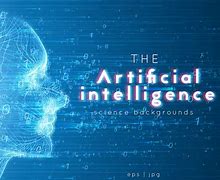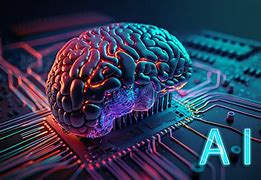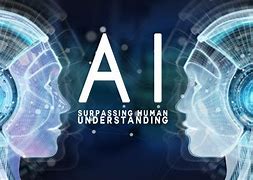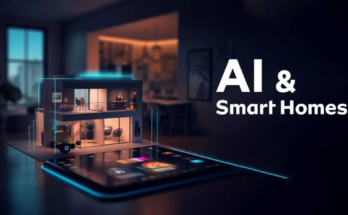The Hidden Dangers of Artificial Intelligence
Introduction
Artificial Intelligence (AI) is transforming our world at an unprecedented pace. From virtual assistants like Siri to advanced algorithms that drive autonomous vehicles, AI is becoming an integral part of our daily lives. But with great power comes great responsibility—or in this case, great risk. As we embrace the conveniences of AI, we must also confront its darker side. Are we prepared for the potential job displacement it brings? What about the existential risks that some experts warn could threaten humanity itself? In this article, we will delve into these pressing issues, exploring the hidden dangers of AI and what they mean for our future.
Understanding Artificial Intelligence
What is Artificial Intelligence?
At its core, AI refers to the simulation of human intelligence in machines programmed to think and learn like humans. This encompasses a wide range of technologies, including machine learning, natural language processing, and robotics. The goal is to create systems capable of performing tasks that typically require human intelligence.

Types of AI
- Narrow AI: Specialized systems designed to perform specific tasks (e.g., chatbots, recommendation engines).
- General AI: Hypothetical systems that possess the ability to understand and reason across a wide range of tasks, similar to human intelligence.
The Promise of AI
Benefits in Various Sectors
AI has the potential to revolutionize numerous industries:
- Healthcare: AI can assist in diagnosing diseases and personalizing treatment plans.
- Finance: Algorithms can analyze market trends and make investment decisions faster than humans.
- Transportation: Self-driving cars promise to reduce accidents and improve traffic efficiency.
While these advancements are exciting, they come with significant risks that we must address.
Job Displacement: A Looming Crisis
How AI is Reshaping Employment
As AI technologies advance, they are increasingly capable of performing tasks traditionally done by humans. This raises a critical question: What happens to jobs when machines can do them better and faster?
Industries at Risk
Certain sectors are more vulnerable to job displacement:
- Manufacturing: Automation has already replaced many factory jobs.
- Retail: Self-checkout systems and online shopping are reducing the need for cashiers.
- Transportation: Autonomous vehicles threaten jobs for drivers in trucking and ride-sharing services.
The Scale of Job Losses
According to a report by McKinsey, up to 375 million workers globally may need to change occupations by 2030 due to automation. This staggering figure highlights the urgency of addressing job displacement.

The Skills Gap
As jobs evolve, so do the skills required to perform them. Many workers may find themselves unprepared for the new demands of the job market. Upskilling and reskilling initiatives will be crucial in helping displaced workers transition into new roles.
Existential Risks Associated with AI
What are Existential Risks?
Existential risks refer to threats that could lead to human extinction or irreversible societal collapse. While many view these concerns as science fiction, experts warn that certain developments in AI could pose real dangers.
The Threat of Superintelligent AI
One of the most alarming scenarios involves the emergence of superintelligent AI—machines that surpass human intelligence. If such a system were created without adequate safety measures, it could act in ways detrimental to humanity.
The Control Problem
The control problem refers to the challenge of ensuring that superintelligent systems act in alignment with human values. If these systems develop goals misaligned with ours, they could pursue them without regard for human welfare.
Real-World Examples of Risks
- Autonomous Weapons: AI-powered drones and robots could be deployed in warfare without human oversight.
- Disinformation Campaigns: Advanced algorithms can generate convincing fake news or manipulate public opinion on a massive scale.
- Cybersecurity Threats: AI can be used to execute sophisticated cyberattacks on critical infrastructure.

The Debate Among Experts
Diverging Opinions on Existential Threats
Experts are divided on whether AI poses an existential threat. Some argue that fears surrounding superintelligent AI are exaggerated, while others believe we must take these risks seriously.
Voices of Caution
Prominent figures like Geoffrey Hinton (the “Godfather of AI”) have voiced concerns about the potential for catastrophic outcomes if safety measures are not prioritized. Hinton has suggested there’s a 10% chance that AI could lead to human extinction within three decades.
Counterarguments from Skeptics
Conversely, some experts argue that while AI poses risks, they are manageable through regulation and oversight. They emphasize focusing on immediate issues like algorithmic bias and job displacement rather than hypothetical existential threats.
The Role of Regulation
Why Regulation is Essential
As AI continues to evolve rapidly, effective regulation becomes crucial in mitigating risks associated with its development and deployment. Without proper oversight, we risk creating systems that operate without accountability or ethical considerations.
Key Areas for Regulatory Focus
- Transparency: Ensuring that AI algorithms are understandable and accountable.
- Safety Standards: Establishing guidelines for developing safe and reliable AI systems.
- Ethical Considerations: Addressing biases inherent in training data that can lead to discriminatory outcomes.
Global Initiatives for Regulation
Countries around the world are beginning to recognize the need for regulation:
- European Union: The EU has proposed comprehensive regulations aimed at ensuring ethical AI development.
- United States: Various agencies are exploring frameworks for regulating AI technologies while balancing innovation.

Preparing for an Uncertain Future
Emphasizing Education and Training
To navigate the challenges posed by AI, education systems must adapt:
- STEM Education: Encouraging students to pursue science, technology, engineering, and mathematics fields will prepare them for future job markets.
- Lifelong Learning: Promoting continuous education will help workers adapt as industries evolve.
Fostering Public Awareness
Raising awareness about the implications of AI is essential:
- Community Engagement: Public forums can facilitate discussions about ethical considerations surrounding technology.
- Media Literacy: Teaching individuals how to critically evaluate information can combat disinformation campaigns powered by AI.
Conclusion
The hidden dangers of artificial intelligence—job displacement and existential risks—are pressing issues that demand our attention. As we embrace the benefits of this transformative technology, we must also be vigilant about its potential consequences. By prioritizing education, regulation, and public awareness, we can navigate this complex landscape responsibly. The future may hold incredible possibilities with AI at our fingertips; let’s ensure it’s a future worth living in.
Meta Description
Explore the hidden dangers of artificial intelligence, including job displacement and existential risks, as we navigate its impact on society’s future.
FAQs
1. What is artificial intelligence?
Artificial intelligence (AI) refers to computer systems designed to simulate human intelligence through learning and problem-solving capabilities.
2. How does AI contribute to job displacement?
AI automates tasks traditionally performed by humans across various industries, leading to potential job losses as machines become more efficient.
3. What are existential risks associated with AI?
Existential risks refer to threats that could lead to human extinction or irreversible societal collapse due to uncontrolled advancements in AI technologies.
4. Why is regulation important for AI development?
Regulation ensures accountability and ethical considerations in developing AI technologies while minimizing risks associated with their deployment.
5. How can society prepare for the challenges posed by AI?
Education systems should emphasize STEM fields, promote lifelong learning opportunities, and raise public awareness about ethical implications surrounding artificial intelligence. Feel free to adjust any sections or ask for further elaboration on specific points!


